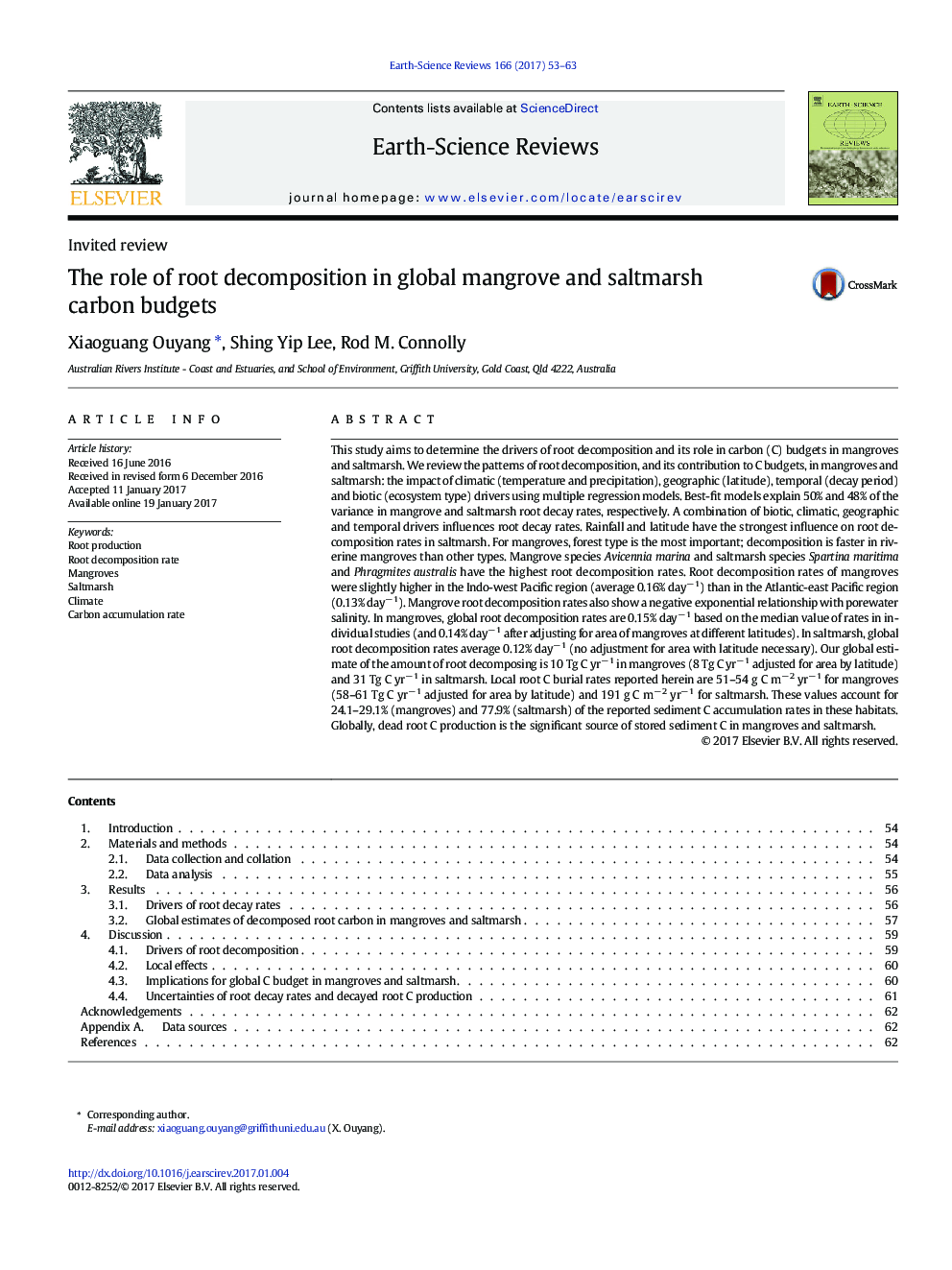| Article ID | Journal | Published Year | Pages | File Type |
|---|---|---|---|---|
| 5785155 | Earth-Science Reviews | 2017 | 11 Pages |
This study aims to determine the drivers of root decomposition and its role in carbon (C) budgets in mangroves and saltmarsh. We review the patterns of root decomposition, and its contribution to C budgets, in mangroves and saltmarsh: the impact of climatic (temperature and precipitation), geographic (latitude), temporal (decay period) and biotic (ecosystem type) drivers using multiple regression models. Best-fit models explain 50% and 48% of the variance in mangrove and saltmarsh root decay rates, respectively. A combination of biotic, climatic, geographic and temporal drivers influences root decay rates. Rainfall and latitude have the strongest influence on root decomposition rates in saltmarsh. For mangroves, forest type is the most important; decomposition is faster in riverine mangroves than other types. Mangrove species Avicennia marina and saltmarsh species Spartina maritima and Phragmites australis have the highest root decomposition rates. Root decomposition rates of mangroves were slightly higher in the Indo-west Pacific region (average 0.16% dayâ 1) than in the Atlantic-east Pacific region (0.13% dayâ 1). Mangrove root decomposition rates also show a negative exponential relationship with porewater salinity. In mangroves, global root decomposition rates are 0.15% dayâ 1 based on the median value of rates in individual studies (and 0.14% dayâ 1 after adjusting for area of mangroves at different latitudes). In saltmarsh, global root decomposition rates average 0.12% dayâ 1 (no adjustment for area with latitude necessary). Our global estimate of the amount of root decomposing is 10 Tg C yrâ 1 in mangroves (8 Tg C yrâ 1 adjusted for area by latitude) and 31 Tg C yrâ 1 in saltmarsh. Local root C burial rates reported herein are 51-54 g C mâ 2 yrâ 1 for mangroves (58-61 Tg C yrâ 1 adjusted for area by latitude) and 191 g C mâ 2 yrâ 1 for saltmarsh. These values account for 24.1-29.1% (mangroves) and 77.9% (saltmarsh) of the reported sediment C accumulation rates in these habitats. Globally, dead root C production is the significant source of stored sediment C in mangroves and saltmarsh.
